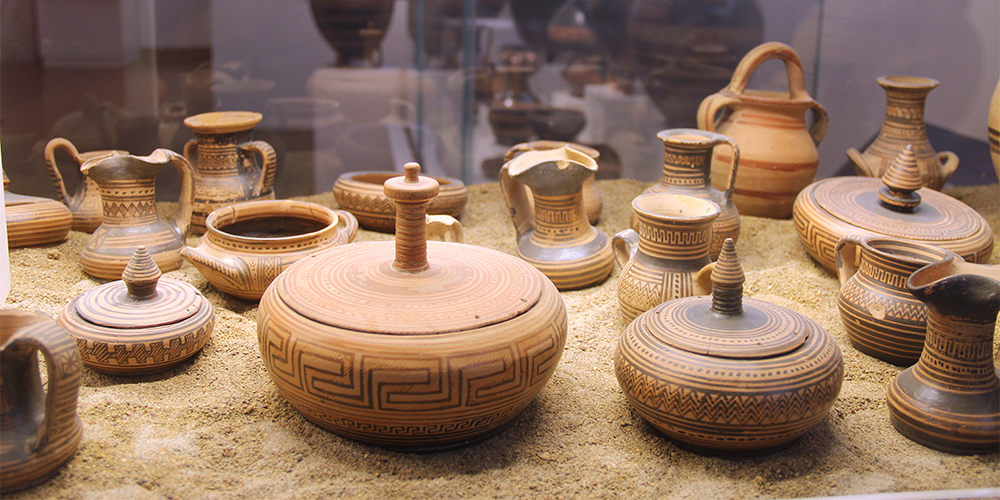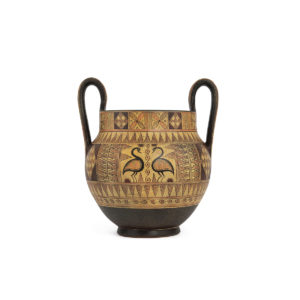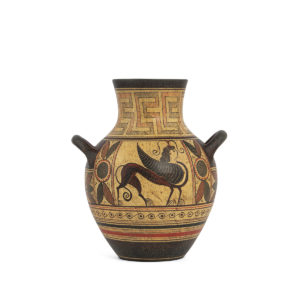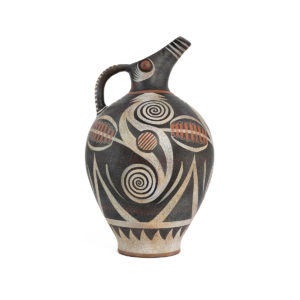
A Guide to the Shapes and Styles of Ancient Greek Pottery
While Greek pots and vases were often painted by skilled artists, they were also designed to be strong and practical, rather than ornamental. These vessels were intended for everyday use. If you're interested in learning more about these impressive pieces, here is a helpful guide to assist you in identifying the main shapes and styles.
Identifying Styles
Several ancient Greek artistic styles are distinguishable by their unique features. The protogeometric style, ranging from 100 to 900 BC, often incorporates circles or semi-circles into the design. The geometric style, which emerged between 900 and 700 BC, features a variety of geometric patterns. The orientalizing style of the 6th century BC was heavily influenced by Eastern art and includes depictions of animals and plants.
Pottery Evolution in Ancient Greece
Black-figure ware, characterized by black figures on a reddish background, was crafted from 600 to 530 BC. The red figure ware, featuring red figures on a black background, emerged in 530 BC. Vases with figures painted on a white background began to appear in 500 BC. Skilled potters fashioned cups in the likeness of animal or human heads. However, from around 400 BC, pottery quality began to deteriorate. Pots were either fashioned after metal vases or over-decorated with intricate designs.
Identifying Ancient Greek Pottery Shapes and Uses
The ancient Greeks used various types of pottery for different purposes. Here are some of the most common shapes and their functions:
Amphorae: used for storing wine, and one of the most common types of pots.
Stamnos and Pelike: also storage jars.
Olpe and Oinochoe: jugs used for serving wine mixed with water.
Large Cups: designed to be passed around among guests at a ceremony. The handles were made for easy holding for people lying on couches.
Hydria: a jar with three handles used by Greek women for carrying water.
Kraters and Volute Kraters: bowls used for mixing wine and water.
Aryballos, Alabastron and Lekythos: small bottles used for storing oils and perfumes.
Pyxis: a container for storing cosmetics.
Discover more
LaunchPad: Ancient Greek Vase Production and the Black-Figure Technique - The Art Institute of Chicago
Greek pots have 'B-sides', and The Ajax and Achilles 'B-side' is a banger | #CuratorsCorner - The British Museum
Greek pottery - Britannica
Ancient Greek pottery - World History Encyclopedia
Vases and minor arts - National Archeological Museum of Athens
more moments
Recent Posts
Selected items from our collection
Share this:
- Click to share on Twitter (Opens in new window)
- Click to share on Facebook (Opens in new window)
- Click to share on LinkedIn (Opens in new window)
- Click to share on Reddit (Opens in new window)
- Click to share on Tumblr (Opens in new window)
- Click to share on Pinterest (Opens in new window)
- Click to share on Pocket (Opens in new window)
- Click to share on Telegram (Opens in new window)
- Click to share on WhatsApp (Opens in new window)




